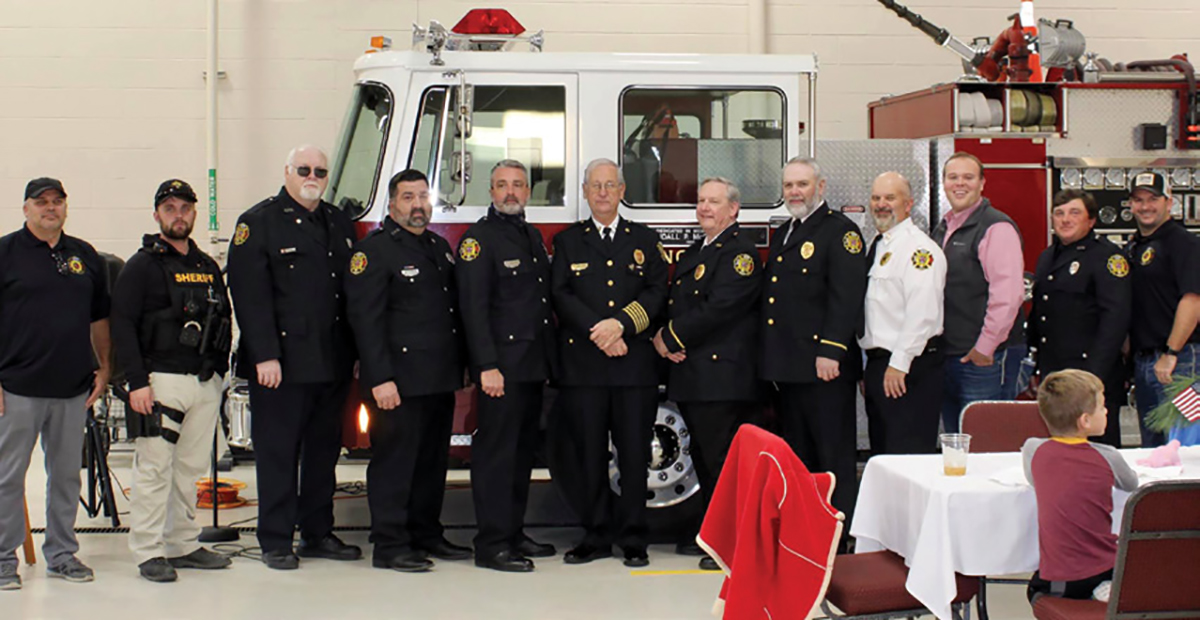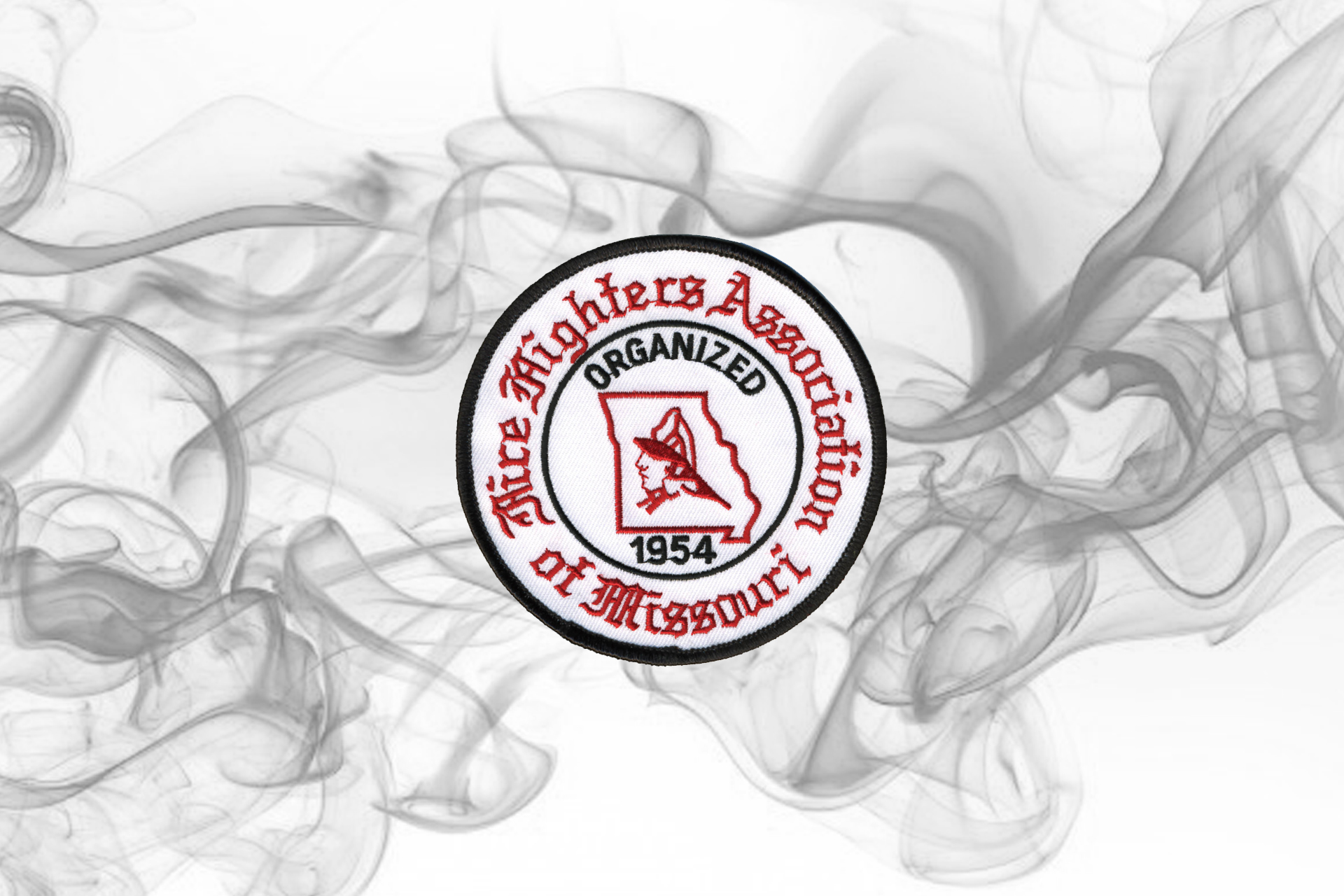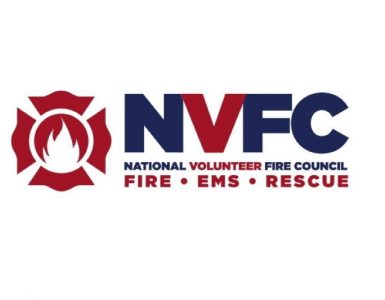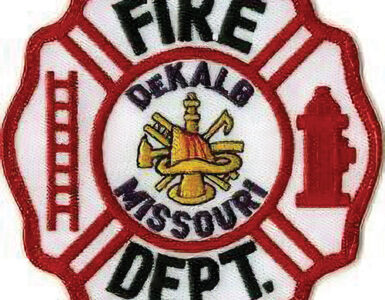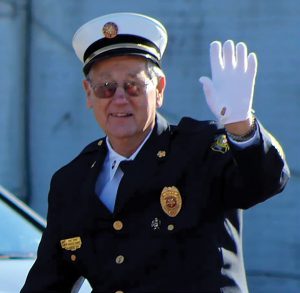
On Saturday, December 5, 2020, the Caruthersville Fire Department members honored Chief Charlie Jones with a surprise salute during the Caruthersville Christmas Parade in which departments from all over the county took part. The celebration continued with a special ceremony held at the fire station later that afternoon.
Today, we share Jones’ story of how he went from a child chasing fire trucks to being chief and holding the unique honor of serving in the same station for 50 years.
When Charlie Jones was only 8 years old he and his family lived at 705 Eastwood. Being only three blocks from the fire station, he would hear the trucks as they left the station and would always wonder where they were going.
“You could follow the trail of water from the 1956 Ford fire truck since it would spill out some water each time it made a turn,” said Jones. “Then if it was a bad one, I would hear the 1947 Diamond T truck respond, and it had a distinct sound from the motor. So I would get on my bike and ride it to wherever the fire was and watch the firemen.”
It was one specific fire that led to him making the decision that he would one day don the fireman’s gear.
“I can remember one Saturday afternoon in November of 1962, I had been to the Ben Franklin Store and walked by the George Cook Motor Company on East 5th St. going to my Grandparents home at 101 East 6th St. Within 30 minutes of visiting them, I heard the fire whistle, I looked up and saw a lot of smoke coming from Cooks Motor Co. I watched Roy Patterson, who was driving the 1956 Ford drop the slide (hoses) and proceed to the hydrant at 4th and Ward. Then the Diamond T came and went to the Hydrant at 5th and Walker. The Hayti Firemen came to assist in putting out the fire. I was there until 8 p.m. that evening before I went home. I was so excited watching Fire Chief Clem Hill organizing every effort to keep the fire from spreading into the B.F. Goodrich store next door. Even though I was 11 years old at the time, I told my parents that I wanted to be a firefighter. I began to go by the fire station and visit with McCurry Meyer, Roy Patterson, Albert Wilbanks, and Curly Marsac. When I graduated in 1969, I went to work at the House’s grocery at Stubtown and helped Cecil House in the meat department. I continued to visit the guys at the station, and I enjoyed McCurry and Clem since they would always welcome me when I came to visit. Then on the evening of May 1, 1970, Chief Hill asked me if I would like to be a firefighter/engineer since Roy Patterson had left due to health reasons. I said yes. I started my first shift on May 3rd for 12 hours.”
However, many may be surprised to find out this was not Jones’ first choice in careers. Charlie’s dad, Clyde Jones, was in the taxi business when he came back from World War II in 1949, Charlie would ride around town with him. Their busiest times were when the Greyhound buses would come through town. Leslie Morgan was the bus agent, and he had been Clyde’s teacher in school, so the two were good friends. Charlie would ride his bike to the station after school to meet the bus and would help loading and unloading freight. Soon, he learned to write tickets, fill out waybills, and learned how to properly turn dollar bills. He knew all of the drivers and the schedules for the 8 buses going North and the 8 going South. And all he wanted to do was drive one of the big 1956 Sceni-cruiser Greyhound buses when he turned 21. But when that time came around, he had found a new love in fire fighting.
During that first shift at the station, he was issued a black rubber knee length coat, knee boots, and Red Fire Ball rubbed gloves along with a thin plastic work helmet. The coat is on display today in the lobby of the Public Safety Building. There were 12 men in the department when he joined and they had one air pack on the truck and could only use it if someone was trapped inside a burning building.
“We had a lot of fires in what was called ‘shotgun’ houses since people burned wood and coal as a heat source. The building materials back then burned quicker than the materials of today. There were always a lot of trash and grass fires too since people burned their trash in burn barrels and the wind would blow out embers setting the grass on fire, then a shed, and then possibly the house. The hoses were made from cotton, and were very stiff when they were wet and hard to roll. Nozzles were only one setting, and the 30 gallons per minute red booster hose was used more than any other line on the truck,” he said.
Another major difference from today was communication. Back then, they were notified by bells in their home or business that the Sheriff’s office would activate when there was a fire as the phone would ring at both places and the Engineer on duty would listen in and write the address on a blackboard at the station before responding to the call.
Radios for the trucks and a base station did not come into play until 1973 and pagers for the firefighters came about on November 18, 1979. This increased fireman attendance since they would receive the call and could respond much quicker.
Another difference from today was that back then the equipment carried on each truck was mostly for extinguishing fires, today they carry vehicle extrication tools, medical equipment, Hazard Material equipment, firefighting foam, four Self Contained Breathing Apparatus on each truck, and other items for public safety. This also means more training is required for the firefighters.
In 1970, the pay was firefighters was $3 per fire and $5 if you hooked up a hydrant, no matter how long it took to extinguish the blaze. In 1974, it was increased to $4 per call and $6 to a hydrant. Today, a new hire will start at $14.50 per call with $10 per hour after 2 hours.
When Charlie stepped into the position as Chief, he made many changes based on his experience and the needs he saw.
“Personnel was the greatest need in years past. I felt there was a need for twenty firefighters and four full-time engineers which is what we have today. The pay scale varies as per their training and years of service. The more one has the more they receive in compensation. In the early 1970’s we worked 12 hour shifts, then in 1972 we added a fourth engineer and worked a 40 hour week. In November 1994, we went over to the 24-hour shifts which are one day on and two days off. In 1997, 12 Firefighters spent 250 hours training to become certified as Firefighter II. 3 received their Firefighter I certification. Our Insurance Services Office fire rating was a Class 8 in 1986. When I became Fire Chief, I told Mayor Sayre we needed to lower the Fire rating to save people money on their homeowner’s insurance. A new 1987 Pumper truck was ordered and with improvements to the water system and newer fire equipment, we lowered the rating to a Class 6 in 1988. Then again in 1994 to a Class 5 and in 2012 to the present rating of Class 4, and the new fire station at the Public Safety Building,” he shared.
In his 50 years of service, he has seen many fires. However, there are those that stand out and can not be wiped from his memory.
He shared a few, “On July 13, 1970, at 2:20 a.m. we were called to the Hall’s Boarding Home at 3rd and Eastwood for a structure fire where people were trapped inside the two-story home. Flames were coming out of the top of the roof and the smoke was terrible. I was the second one there and began laying out hoses to fight the fire. As I grabbed a hose and started spraying water into the front bedroom, I heard a moan from inside and told McCurry Meyer to shine his light inside. There was a man lying just under the window sill. McCurry and Blackie Tarpley reached in the window and grabbed him under his shoulders and pulled him out. Noel Dean took him to the hospital where he died around 9:30 a.m. To this day I can remember his name, Jessie Royal. Mrs. Gatewood also passed away in the fire and Delbert Thompson’s Dad managed to make it out of the fire. I was only 18 and was scared to death of what I had witnessed. We were at the scene until 8 a.m. and I was scheduled to begin my shift at 4:30 a.m. for 12 hours. It was a day I will never forget, it was time for me to decide if I could handle the life of a firefighter or not. After talking with Clem Hill and McCurry Meyer, they encouraged me to stay in the department and I did and learned a lot about firefighting that terrible night.
The Chaffin Motor Hotel fire on November 17th, 1979 was also a terrible fire. Three people lost their lives that night. I was in Memphis when the call came in at 5 p.m. and didn’t get back to Caruthersville until 11 p.m. When coming through Covington, TN, I heard the Sheriff’s Department talking on my radio and I knew something was wrong. After I took my mother home, I went to the scene and helped with the fire, and stayed most of the night searching for the bodies. I came back at 10 a.m. and continued to extinguish the debris, worked my shift on Sunday night, and went back to the hotel site at noon and helped find the bodies of Carolyn and Christy Storey. Carolyn was a classmate of mine and it was hard for me, as I had grown up with her. Rick Clark was Coroner then, and he was very good to work with during the search. Mrs. Young’s body was never found.
Labor Day weekend September 1980 at 2 a.m. the Dental office at 6th and Ward was on fire. Ronnie Warren and I noticed it and I sent out the page. It later spread to the Gaither’s Furniture Store. Hayti Fire Department came over for Mutual aid and we were on the scene for 12 hours.
The Cotton Warehouse Fires in 1987 and 1989 were two huge fires as 80,000 bales of cotton were destroyed.
December 22, 1989, The Shirley Bailey house at 6th St. and Carleton where Donna Morgan lives now. We were called there twice that evening. The first call was at 4 p.m. to a cooking fire on the stove that was extinguished within thirty minutes. Then at 6:37 p.m. when we were called back to the scene. No one was home and I could see flames and smoke when I left the fire station. It was 2 degrees that evening and we were out until after midnight when the temperature dropped to 0 degrees. All of the Firefighters were covered in ice, and the First Baptist Church brought their bus to the scene so the firefighters could get warm and return to the fire. That night was the coldest I have ever been while fighting a fire.
March 8, 1991, at 12:35 p.m. to the Riverfront Bar on Ward Avenue. The two-story building had caught on fire 3 weeks prior and workers had removed some burned wood and set it on fire during the noon hour and it spread up the back wall of the building. Randy McDonald and Jim Young were on a hose line when the North wall came down, covering Randy with bricks. Jim was not injured but Randy lost his life that day, It was the first line of duty death in our department’s history. Randy was a wonderful Christian man and loved being a Firefighter. He will always be in our hearts as this was a very sad day in our community.”
The community has always been important to Charlie, he can be seen serving in many roles outside of the fire department. He is part of the Lions Club, is a Deacon of the First Baptist Church, is on the Board of Directors for RSVP, and is a Mutual Aid Coordinator for Fire in Region E in Pemiscot and New Madrid Counties. He is also a member of the Bootheel Local Emergency Planning Committee and serves on the Caruthersville Building Local Prosperity Committee for Clean up and Work Force Development. As well as the Health Schools, Health Community committee, and working alongside the Pemiscot County Initiative Network and the County Health Center for their annual Safety Day.
When it comes to his job as Chief, it isn’t just about sitting around waiting for the fire bell to ring.
“I was appointed as the Emergency Management Director in May 1996 since the City did not have an Emergency Management Plan. I had suggested to Mayor Sayre that we should have a plan for Disasters for the City. This has been very useful over the last 24 years since we had three Federal declared disasters. The Tornado in 2006, Ice Storm in 2009, Flood in 2011. All of these Disasters were in the plan which was a great plan to have as guidance for Mitigation, Preparedness, Emergency Response, and Recovery. FEMA was a big part in getting funds to the City during each of these disasters. As EMD for the City, I also became involved with the National Weather Service in Memphis since the weather is a part of disaster planning. As I met the weather personnel at several meetings, this is when I joined in partnership with the weather service to provide Storm Spotter training for our area. I met Chief Meteorologist Jim Belles at a course held at the Library and became good friends with him. He is still the lead Meteorologist at the weather service in Memphis today. After several visits to the NWS, I obtained information for the City to become a Storm Ready Community. After going through the program requirements, we were designated as a Storm Ready Community on June 25, 2005. Our City and Pontotoc, Mississippi are the only Two Cities that have a Timmy the Twister Weather sign. I will always remember how wonderful all of the staff was after our Tornado. Our certification for renewal is due in June and I am proud to say that it played a big difference in the awareness of being ready for severe storms. Education of the public to use weather radios and what to do when sirens are activated is the key to survival. I have to attend a class once a year in Memphis to keep our certification. Fire and Police personnel are certified, Storm Spotters. Each year the schools are required to hold Fire, Tornado, Earthquake, and Intruder drills. I go and monitor how well the students participate before, during, and after the drills and document the results in each of the school’s files. During the Fire prevention week in October, the department goes out to show the pumper trucks and equipment that is carried and discuss fire prevention techniques s at the Elementary School, DAEOC Head Start, and R-3 at McCarty. We have a program where a business owner donates funds to purchase materials to be given to the children. This is through the National Fire Safety Council and we have been doing this for 30 years or more. I appreciate those who contribute to the program each year,” he explains.
Fifty years is a long time and many memories made, “My best memories are the ones whom I have worked with during the past Fifty years. There are so many that I can name, and I would probably leave someone out, so I will have to say that I have been blessed by a good dedicated group of men and women. Those who were in the department for several years, and those who were on for a short period of time. In looking back over the years, I have many fond memories of certain fires that occurred and can say that we all did the best we could to save lives and property. I would also say that over the past 50 years that I have worked under Seven Mayors and Two Interim Mayors along with numerous City Council Members. Larry Bowman was a man who always kept all of us laughing and would do anything after a fire we would ask of him including washing the fire trucks or cleaning the station. He and Randy McDonald were Two guys that we all have fond memories of along with Clem Hill, McCurry Meyer, David Currie, Bill Williams, Ellis Stanfill, Ed Davis, Frank Morgan, Hardy Privett, and so many others that I will always cherish in my heart. I thank God for that privilege of the memories that he gave to me.”
“I would like to say I have had a wonderful, exciting, and great fifty years as a Firefighter and Fire Chief (since May 19, 1986) as a member of the Caruthersville Fire Department. I could not have survived this long without the guidance of my Lord and Savior Jesus Christ. Two of the hardest times in my career was the death of Randy McDonald on March 8, 1991, and Bobby Coleman on February 11, 2015. Both of them were Christian men who will be in my heart forever. God Bless them for their dedicated service to the department. I have always tried to give my best to this community in protecting lives and property. I have seen much destruction and death during my fifty years. I know my time is winding down with the years going by rapidly. I would like to say the citizens of Caruthersville have the best in Fire Fighting equipment and a great Public Safety Building thanks to our Mayors and City Council Members for the past fifty years. Thank you for having confidence in me to serve this City.”
